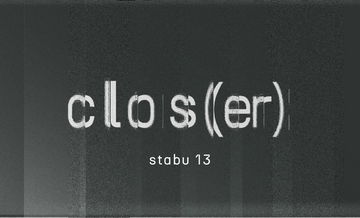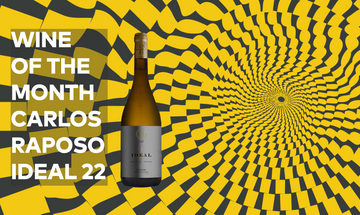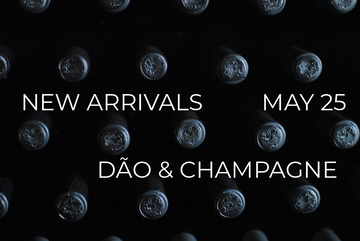A Return to Roots
When Da Gama Wines looks for new producers, we look for more than technical mastery. We look for conviction. For clarity of intent. For wines that communicate something essential about where they come from, and who made them.
António Madeira fits that standard completely.
Now working in the Dão — one of Portugal’s most historic yet misunderstood regions — António has spent over a decade restoring old vineyards, recovering nearly lost grape varieties, and developing one of the most thoughtful, low-intervention winemaking practices in the country. His work is grounded in biodynamics, rooted in field-blend traditions, and expressed with rare transparency in the bottle.
António Madeira’s story begins with a family uprooted by Salazar’s regime in 1970, when his father narrowly escaped on a Paris‑bound train and rebuilt his life in France. Born in Paris in 1978, António trained as an engineer yet spent every summer among his family’s century‑old vineyards in the Serra da Estrela foothills. In 2010 he acquired his first hectare of abandoned vines, restoring tangled rows by hand before producing his inaugural 2011 vintage. For years he balanced a Parisian career with holiday harvests, until in 2017 he and his family moved to Dão full time and committed to biodynamic farming, ushering in a new chapter for those long‑neglected slopes.
We are proud to introduce António Madeira as part of the Da Gama Wines portfolio. In this article, we explore the history, methods, and philosophy behind his wines — and why we believe they deserve your attention.
Vineyard Preservation and Biodiversity
António Madeira’s work begins where many wines end — in the soil.
His commitment to preserving the Dão’s viticultural legacy is not abstract. It’s tangible. It’s in the labor of restoring century-old vineyards. It’s in the choice to work with nature, not against it.
He currently cultivates around 8 hectares, split across more than 20 micro-plots in the foothills of the Serra da Estrela. Many of these parcels were planted between 50 and 120 years ago. Some exceed that age. Each site reflects a different face of the granite-rich terrain, with diverse exposures, altitudes, and microclimates.
These are not monoculture vineyards. They are polyphonic. Over 45 indigenous grape varieties grow side by side — co-planted as they once were before industrial viticulture took hold. This field-blending, known locally as “mistura de castas,” is at the heart of António’s wines.
He identifies the Dão as one of the richest repositories of Portuguese varietal biodiversity, a view echoed by ampelographer Álvaro Castro, who calls the region “a genetic museum of viticulture.” António is not just preserving these vines — he’s curating and interpreting them.
Key Indigenous Grapes in António Madeira’s Wines:
-
Jaen (Mencía): Early-ripening, delicate skins, medium tannins. In the Dão, it expresses vibrant red fruit, wild herbs, and a mineral finish. Sensitive to terroir and elevates with altitude.
-
Alfrocheiro: Deep color, spicy aromatics, firm but fine-grained tannins. Adds structure and savory complexity.
-
Tinta Amarela (Trincadeira): Demanding to grow, susceptible to rot, but aromatic and expressive. Brings floral and balsamic tones, with elegance when grown at altitude.
-
Baga: Often misunderstood. In Dão’s granite soils, it offers refined tannins, earthy backbone, and long aging capacity.
-
Bastardo (Trousseau): Pale color, light body, aromatic lift. Lends finesse and complexity to blends.
-
Encruzado: Arguably Portugal’s finest white variety. Floral, citrus-driven, and mineral. Ages well, often compared to white Burgundy.
Farming is certified organic and follows biodynamic principles. This is not branding — it’s practice. Vines are worked with minimal machinery. Horse plowing reduces soil compaction. Composting and cover crops stimulate microbial life.
There are no herbicides, no synthetic pesticides, no irrigation. The goal is to maintain the vineyard as a living ecosystem.
“Healthy soils make expressive wines,” António explains. “Biodynamics helps me listen more closely to the vineyard.”
António partners with the Nelas school’s clonal repository under director Vanda Batista, ensuring rare varieties aren’t lost when she retires.
In the cellar, his approach is Burgundian: native‑yeast ferments, no fining or filtration, minimal sulfur, and a willingness to let malolactic run since 2015—choices that convey each vineyard’s character without artifice.
António sees Dão as Portugal’s undiscovered Grand Cru, and every bottle he releases carries that conviction.
Winemaking Philosophy
António Madeira’s approach in the cellar mirrors his work in the vineyard: intentional restraint. Precision without manipulation. His goal is not to shape the wine into a product, but to preserve the integrity of place — to make the Dão audible in every glass.
This philosophy aligns with the broader movement of low-intervention winemaking, a practice rooted in the rejection of standardization. Its modern form emerged in France in the late 20th century, led by figures like Jules Chauvet and Pierre Overnoy, who challenged the orthodoxy of chemical additives, laboratory yeasts, and mechanized vinification. The ethos has since spread to conscientious producers across Europe — and Madeira is among its most serious interpreters in Portugal.
He does not make “natural wine” as a category. He makes site-specific wine using natural methods.
Cellar Practices
Fermentations are spontaneous, initiated only by the native yeasts that arrive on the grapes and live in the cellar. There is no temperature control — fermentations proceed at their own pace.
There are no enzymes, no acid corrections, no chaptalization. Sulfur is used sparingly, if at all. In his “A Liberdade” cuvées, Madeira vinifies and bottles with no added sulfites. In all his wines, stability is not achieved by additives, but by balance.
The wines undergo full malolactic fermentation, which contributes to their round texture and aromatic depth.
Madeira vinifies each vineyard separately. After primary and malolactic fermentation, the wines are left to rest — often for up to two years — in a combination of used French oak barrels, cement, and stainless steel. New oak is avoided. Racking is minimal. Fining and filtration are generally avoided.
Philosophical Underpinnings
“I try to do as little as possible,” António often says, “but that doesn’t mean doing nothing.”
His philosophy is not about rejecting technology outright — it’s about using it judiciously. He intervenes only when the health of the wine or the transparency of the vintage demands it.
He embraces the unpredictability of low-intervention winemaking. Some years the wines take longer to open. That’s part of their identity.
The Dão’s Renaissance
The Dão is one of Portugal’s oldest and most storied wine regions. Officially demarcated in 1908, its viticultural roots go back to Roman times. Nestled between the Serra da Estrela and Serra do Caramulo, the region benefits from granite soils, high elevations, and a climate that offers both Atlantic and continental influences.
Historically, the Dão was known for its elegant, age-worthy wines, earning praise in the 19th century from Parisian merchants who referred to it as the "Burgundy of the South." But its potential was stifled in the 20th century by state-imposed cooperatives that limited quality and creativity.
It wasn’t until Portugal’s entry into the EU in 1986 that winemaking autonomy was restored. Over the past two decades, a quiet revolution has been taking place.
Key Voices in the Region:
-
Álvaro Castro (Quinta da Pellada) – One of the first to show the region’s true potential post-coop era. Wines of precision and freshness.
-
Casa de Mouraz – Among the earliest adopters of biodynamics in Portugal.
-
Rui Reguinga (Terras de Tavares) – Working with centenarian vines, unfiltered, native-yeast fermentations.
-
Textura Wines – A younger project with a terroir-first, minimal-intervention approach.
- Carlos Raposo (World Wild Wines) - uber-experienced and travelled, spent years working in Bordeaux, Burgundy, Rioja and Napa Valley before returning to the Dão and setting a new high water mark in winemaking. We're proud to have him as part of our portfolio as well.
Together with António Madeira, these producers are shaping a new narrative for the Dão — one built on authenticity, biodiversity, and regional identity.
The region’s vineyards, many planted at 400–600 meters above sea level, benefit from large diurnal shifts that preserve acidity. The soils, mostly decomposed granite, contribute to the linear, mineral profiles of both reds and whites. Structure comes from the land. Freshness comes from elevation. Identity comes from the grapes.
Wine Portfolio
-
Branco & Tinto: Sourced from António´s younger vines (which are still 40+yrs old), but not one bit less relevant and significant.
-
Vinhas Velhas Branco & Tinto: Old-vine blends showing depth, nuance, and age-worthiness.
-
Single-Vineyard Selections:
-
A Palheira: Blend from 60–100-year-old vines.
-
Os Granitos: Jaen-dominant, 100-year-old site.
-
Vinha da Serra: 600+ meters, highlights Tinta Amarela.
-
A Centenária: From vines over 130 years old.
-
-
A Liberdade: No sulfur added. Made entirely without additives.
-
Ainda Palhete: Traditional co-ferment of red and white varieties.
Experience António Madeira’s Wines
Da Gama Wines is proud to offer selections from António Madeira’s portfolio — wines of integrity, depth, and place.






